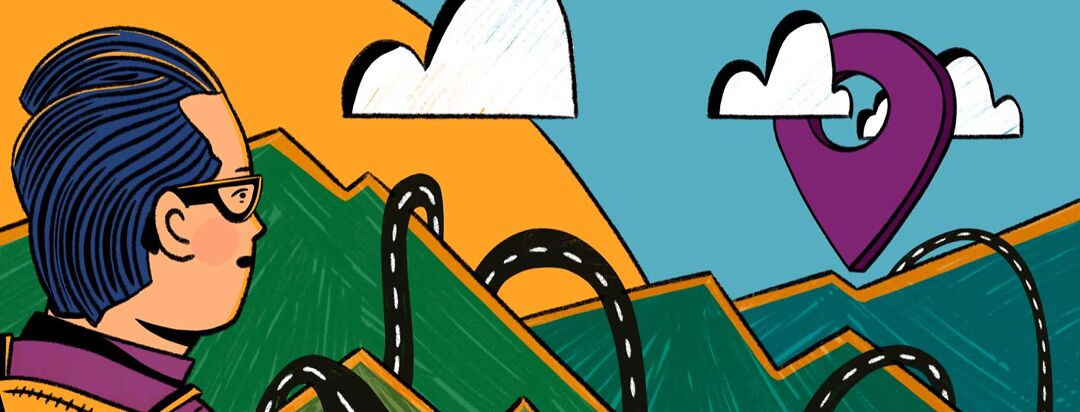Navigation and Accessibility: NMOSD Obstacles
NMOSD came as a real eye-opener for me holistically. I used to see specially-abled people walk by, unaware of the challenges they must face in a zillion ways. Now I am in their shoes, knowing what it feels like to live with navigation and accessibility obstacles.
My initial chapter with disability began with optic neuritis, which left me partially blind in my left eye. The phases that followed were "electric waves" and heaviness that went down my spine, thigh, and into the soles of my feet. I was gaslit, and lacked early intervention.
4 months later I was paralyzed from my waist down and diagnosed with NMOSD.
This or That
Is accessibility an issue for you?
Everything takes a toll
Disability gives us physical impairment, activity limitations, participation restrictions, and more mental health issues. Living with limited eyesight became a challenge. Although physiotherapy steroids were helping me recover from paralysis, there was still a sense of loneliness that sank in. Everyday things like reading, cooking, and navigating even to the loo became a huge task.
Now stepping outside of the house for whatever reason is very daunting and perplexing. Everything takes a toll. There are miscalculations, spilling things, there is bumping into things, pins and needles sensations, and jerky movements.
As much as I want to normalize mobility and navigation it is a new experience for me.
From my experience, I have divided obstacles into 2 categories:
- Indoor buildings (like offices, public places, schools)
- Outdoors (mainly transportation)
Navigation and accessibility: indoors
My daughter and parents have done baby-proofing of the home. As long as I am in the vicinity of my home, I am okay and safe. But the minute I go out, it becomes tricky.
Let's begin with the entrance of any building. I noticed that not every entrance or structure (for me, in India) has a ramp. There is a lack of service steps and tactile aids. Even if the ramp is there, the support is missing. Not every building or place that you enter has a friendly area for people with special needs (especially for those using a wheelchair). There is a lack of signage. Washrooms for specially-abled are used more as storage spaces or are locked and if, by any chance you find one that is operational, the supports will be missing.
Some buildings that are 3-4 stories high, the elevator is missing - and if the elevator is there, the braille is missing. I've also found emergency alarms omitted. ATMs are still okay as long as they are on the ground floor, however, if they are 1st or 2nd level they won't have tactile aids or ramps.
Ascending and descending the stairs, (especially to the 2nd or 3rd floor) is a major mobility barrier for me - more so because I have chronic fatigue. There are balance issues, weakness in the legs, breathing difficulties, and sometimes even bad falls. The stairs and escalator can be daunting, especially when you have those fancy patterns on the stairs or floor which play tricks with your head and you freeze or are unable to walk further due to lack of visual acuteness followed by brain fog.
The further you get away from the city the worse it gets. Our schools out of all, lack these facilities. So imagine the plight of specially-abled students.
Navigation and accessibility: outdoors
This mainly includes transport and transportation areas.
I am staying in Delhi. The metro rail airport, and railways do have proper disability facilities. There are special helpers. The tactile aids and ramps are in place. They are wheelchair friendly. And seats are reserved.
Metro and Airport are the friendliest of all for specially-abled warriors. Everything is in place. But railways do have misses. The railway coaches are not that accessible, unless you are traveling in first class - you won’t be able to use your assistive devices comfortably. Also, the gap between the stairs of the coach and platform is massive.
The same goes for buses. The latest bus does have ramps that would go down for wheelchair access, but there is a lack of wheelchair area in busses. So for someone who is on the motorized chair, they can’t access the bus. And let's not forget the specialty parking. You see places reserved for staff parking but none for specially abled parking.
Another navigational issue outdoors is traffic. The traffic light system is not the same as Western countries, where when you press a button, the light changes and there is a sound. The driver will patiently wait and you can cross the road without fear of being run down. Making it so safe, for the elderly, specially-abled and visually impaired individuals.
In India, it's a different story altogether. There are accidents all the time. I have been a part of two major accidents during my college days because someone else was not following the rules. People hardly follow traffic rules, so the concept of zebra crossing doesn’t work. During the red light maximum time, the cars are parked on the zebra crossing, whereas the other half are in a rush. Chances are they will cross past the red light.
So if a normal person has an issue in navigation we are specially-abled, imagine our plight trying to the cross road, and me being partially from the left side makes it is horrendous.
Marginalized
I have simply elaborated on some of the challenges, i.e transportation. But there are other other issues. The reality is we are socially marginalized and the lack of proper system accessibility makes it worse. But we are warriors hanging in there navigating our way through this mayhem.
Question for the reader
What navigation and accessibility issues have you encountered? Let us know in the comments below, we love to hear from you.

Join the conversation